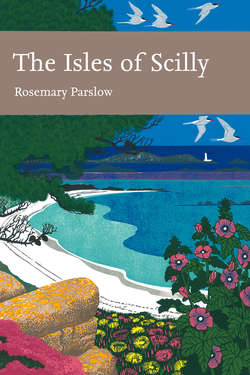Читать книгу The Isles of Scilly - Rosemary Parslow - Страница 30
EARLY AGRICULTURE
ОглавлениеIt was not until about 2000 BC that the first settlements may have started on Scilly (Ashbee, 1974; Thomas, 1985). The evidence from pollen deposits, and from sources such as middens and other archaeological deposits, shows changes in the palaeoenvironment after the clearing of the forest, resulting in more open landscapes with grass and heathland species (Ratcliffe & Straker, 1996). These clearances coincided with the early settlement of Scilly, when it is presumed the woodland was cleared for timber and firewood, as well as to open up areas for cultivation. The growing of cereals (and possibly other plants that produce edible seeds) and the use of the plough must have happened quite early after the arrival of the first settlers. The excavation of the Iron Age site at Bar Point graphically illustrates the agricultural practice at that time (Evans, 1984), with evidence of stone banks to produce individual fields – not apparently for keeping stock in, but to demarcate ownerships. Cultivation marks left by the rip-ard (a primitive plough) and mattock as well as burnt charcoal from gorse were found, and also hoof prints of domestic animals – horses, cattle, and sheep or goats. Pollen analysis indicated open land without trees or shrubs (although a small amount of oak, alder and hazel pollen was found in one location), and the presence of cereal pollen points to cereal cultivation. Ribwort plantain was ‘in consistent but low abundance’, which suggests cultivation and grazed land. The evidence for deforestation is based on the association of ribwort plantain with pasture and cultivation and its intolerance of competition with woody plants (Godwin, 1975).
Once the islands had been successfully settled one presumes a period of stability and expansion of the human population followed. This is when the great changes in the landscape, the vegetation and animal life in Scilly would have really begun. As the woodland was cleared, perhaps leaving only small areas, more and more land would have been broken up and cultivated to meet the demands of the increasing human population. Farm stock would have been grazed on the open land, cliffs, dune grasslands, coastlands or around the marshy areas. Bell heather Erica cinerea, ling Calluna vulgaris, reed Phragmites australis and bracken would have been cut for bedding and thatching. Beaches would have been scoured to search for edible seaweed, molluscs and fish. Widespread cultivation and grazing became prominent during the second millennium BC, with many evidences of farming in the pollen and charcoal plant remains, querns for grinding grain, bones of farm animals and so on
FIG 13. The remains of an Iron Age and Romano-British settlement are still visible on Halangy Down, St Mary’s. March 2006. (Rosemary Parslow)
(S. Butcher, in litt.). Also the field walls, settlements and lynchets across some fields indicate the impact on the landscape. Cultivation of the islands must have continued over many centuries, as is demonstrated near the Romano-British settlement at Halangy Down (Fig. 13), where Charles Thomas and Peter Fowler found traces of earlier fields with ones on a different alignment underneath.
There are numerous field walls that are now only seen at low water spring tides in the sea off Samson, Teän and some other islands (Fig. 14). These all point to there having been much more land available for grazing or cultivation before it was lost to the sea with sea-level rise. Their presence also suggests that not all the low-lying land was marsh; but only reasonably accessible land would have been divided into fields.
FIG 14. At low tide the lines of ancient field walls are visible in the sand flats off Samson. June 2002. (Rosemary Parslow)
